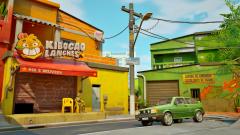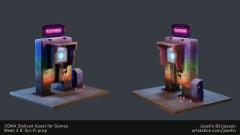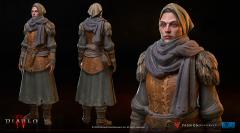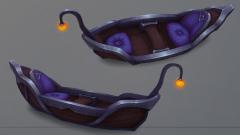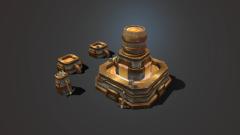-
Posts
26,365 -
Joined
-
Last visited
Content Type
Forums
Calendar
Gallery
Everything posted by Carlosan
-
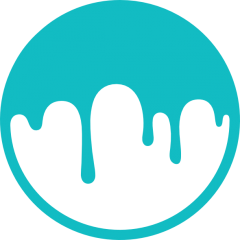
[Solved] 3DCoat crashed and wont reboot again
Carlosan replied to Sui's topic in SOS! If you need urgent help for 3DCoat
Send this crash report to andrewshpagin@gmail.com Do you have onedrive installed ? Look at this. Or if you have 2 monitors, try opening 3DC on the first monitor. -

marcos-mota-finalrender-zona-show-maarcmota.jpg
Carlosan reviewed Carlosan's gallery image in Finished Works
-
From the album: Finished Works
-

josefin-borjesson-sci-fi-prop-sides.jpg
Carlosan reviewed Carlosan's gallery image in Finished Works
-
From the album: Finished Works
-

matrix-wong-npcf-frac-omni-02-texture01.jpg
Carlosan reviewed Carlosan's gallery image in Finished Works
-
From the album: Finished Works
-
3DCoat have several types of mesh painting: Surface (or vertex), Voxel, Ptex, Microvertex and Per pixel painting. Surface painting (also named Polypaint and Vertex Paint) allows painting on a model’s vertex surface without assigning a texture map, modifying vertex color attributes. Once you use any method to “Bake” your model and its UV topology into the Painting Room, all these painted details will be baked into this permanent mesh as a texture map, which can then be exported along with your mesh. Voxel painting introduces true volumetric texture painting, which is not only a new paradigm within the application itself but to the entire industry as well. To help illustrate why this is such a unique painting platform, the cubes represent voxels, and thus the user has true volumetric depth. This does not mean vertex painting that paints the surface of the shape (even if with the benefit of not needing a UV map), but where you paint a volume to create a 3D texture, adding color to voxels. PerPixelPainting after create an UV mapping assigns 3D coordinates to a 3D mesh vertex for mapping 2D textures. UV mapping assigns 3D coordinates to a 3D mesh vertex for mapping 2D textures, every pixel on the 2D texture is represented as a point in 3D space. Painting is performed not over vertices but directly over pixels on the texture. Microvertex or displacement mapping is an alternative computer graphics technique in contrast to bump mapping, normal mapping, and parallax mapping, using a texture or height map to cause an effect where the actual geometric position of points over the textured surface are displaced, often along the local surface normal, according to the value the texture function evaluates to at each point on the surface. Ptex painting is one of the more amazing technologies, allowing you to paint extremely high-resolution textures on a per polygon basis, as well as completely bypassing all UV work – as it does not require any manual input for the creation of the UV maps. Ptex, in its current implementation, only supports quad polygons, no triangles or N-gons.
-
-
From the album: Finished Works
-
-
From the album: Finished Works
-

zugzug-studio-suramar-boat-scr-1920-s3.jpg
Carlosan reviewed Carlosan's gallery image in Finished Works
-
From the album: Finished Works
-

Scale master doesn't save in project. v24.17
Carlosan replied to ArtaWorks's topic in 3DCoat AppLinks
Reported, thanks for point it up -
-
From the album: Finished Works
-
-
From the album: Finished Works
-

[Solved] Normalmap error importing to blender
Carlosan replied to Sui's topic in SOS! If you need urgent help for 3DCoat
If you bake the normal map on substance, it looks ok ok substance and blender ?- 11 replies
-
- blender
- substance painter
-
(and 2 more)
Tagged with:
-

Scale master doesn't save in project. v24.17
Carlosan replied to ArtaWorks's topic in 3DCoat AppLinks
also it changes when you set it on preferences ?


